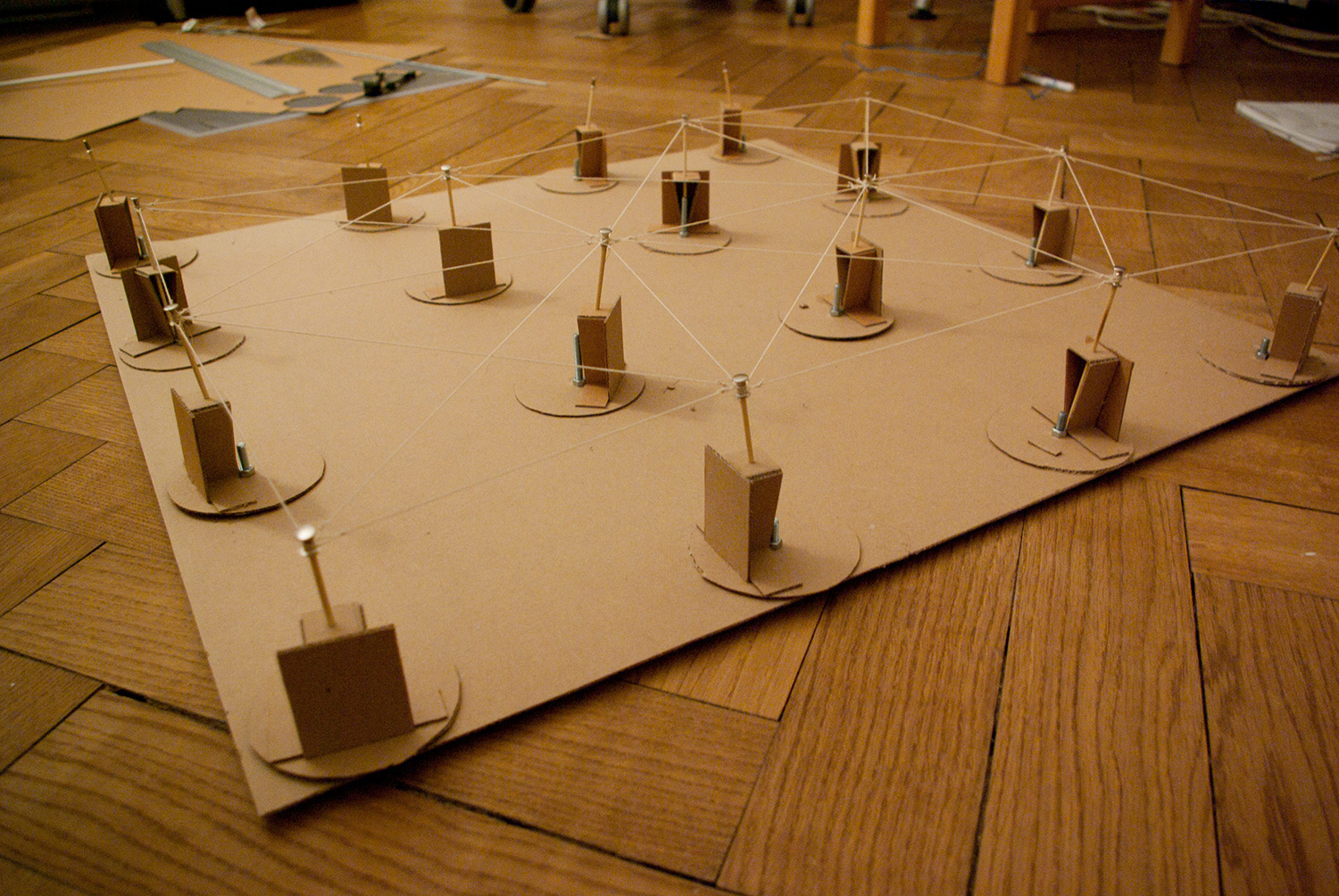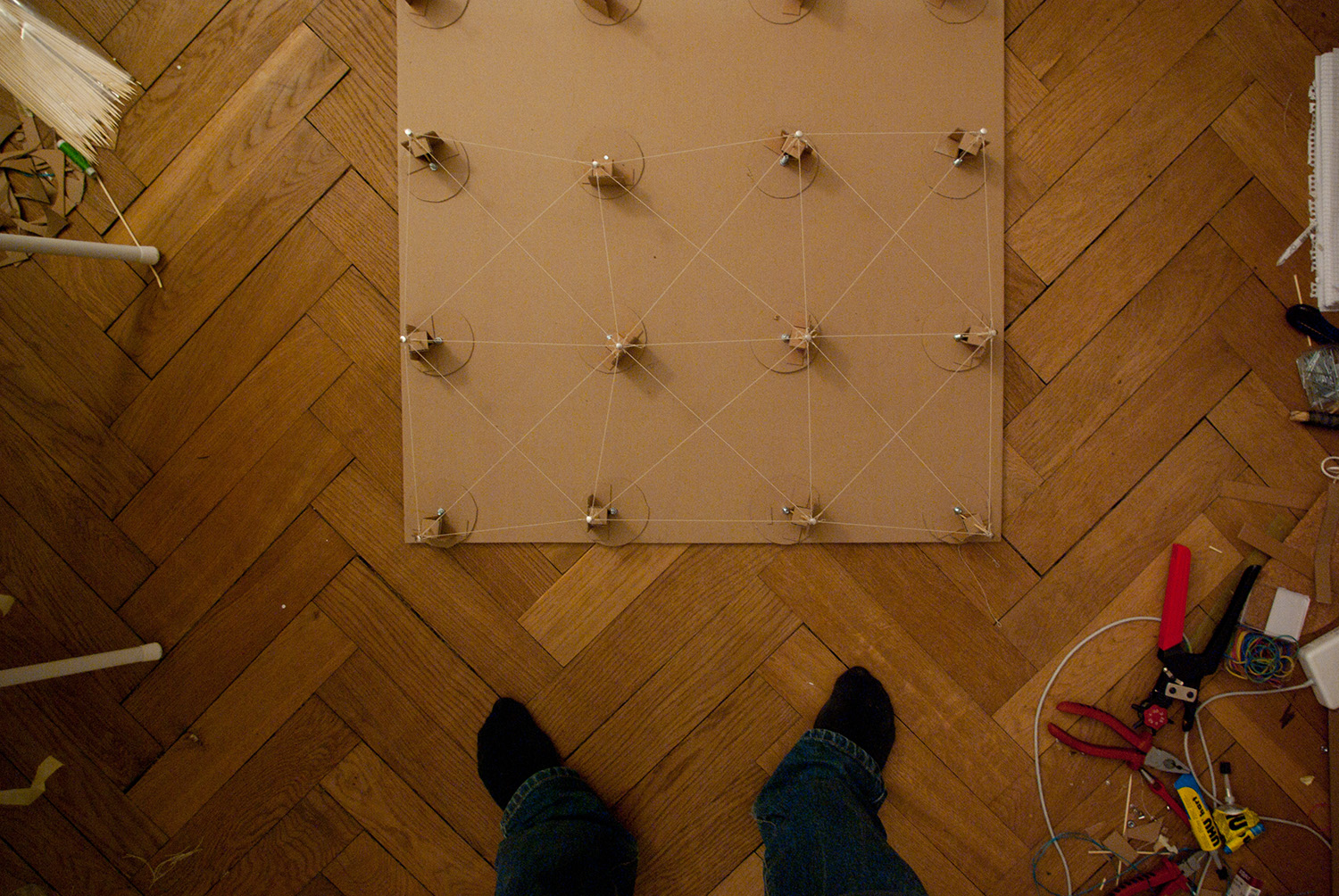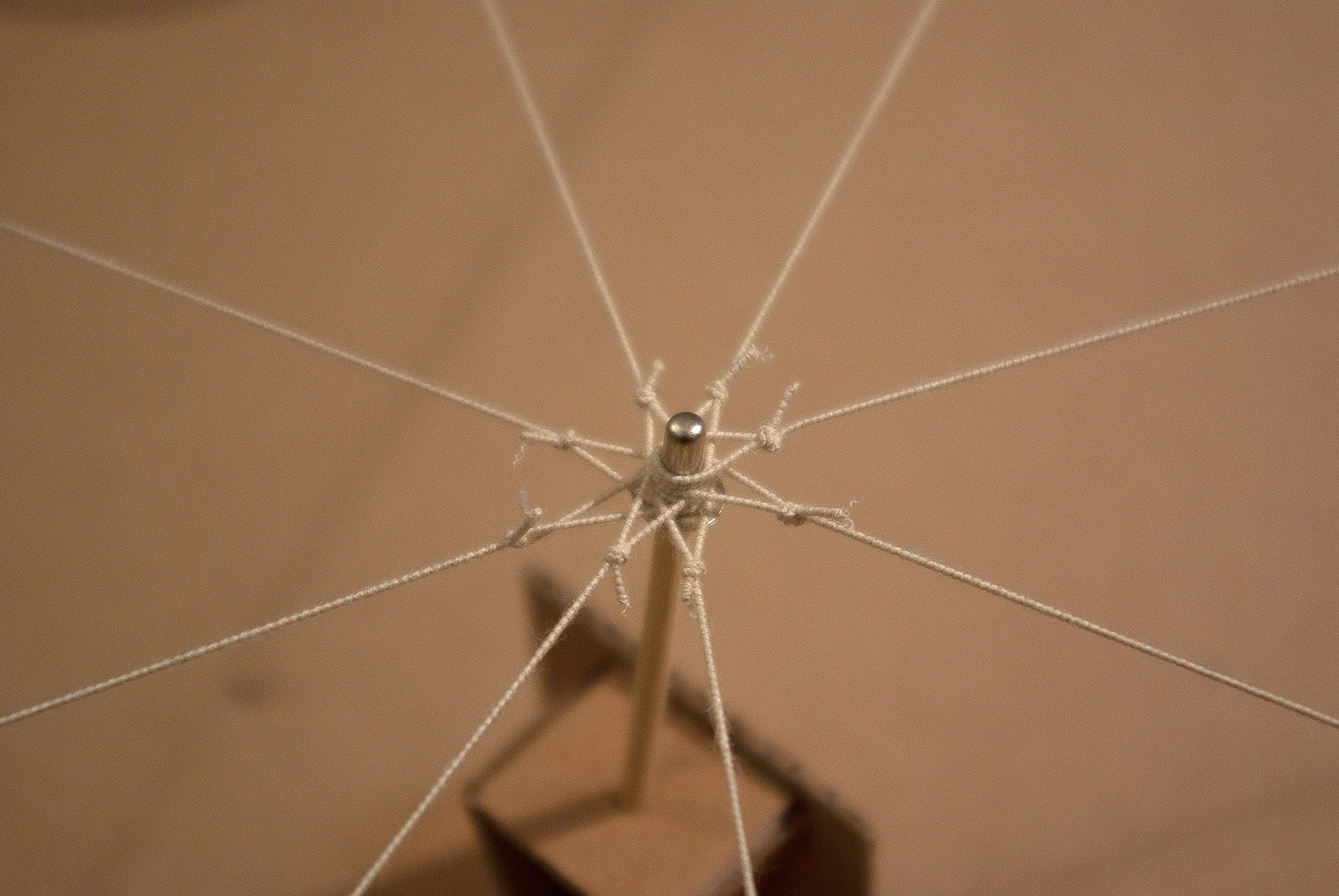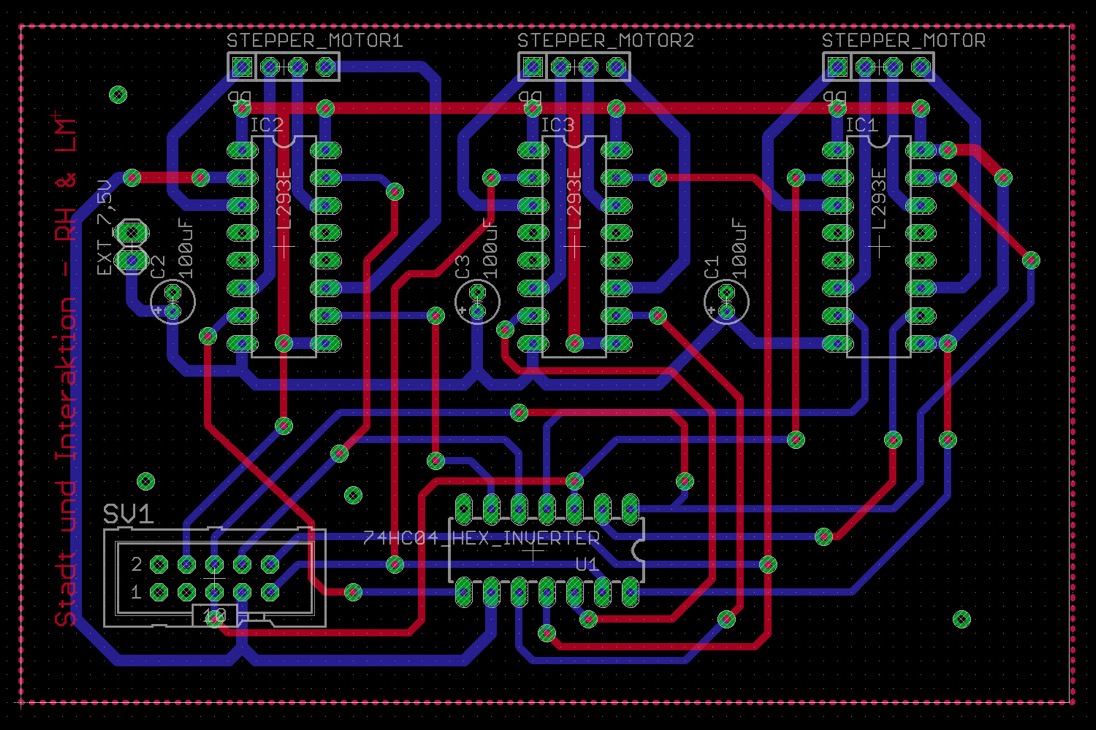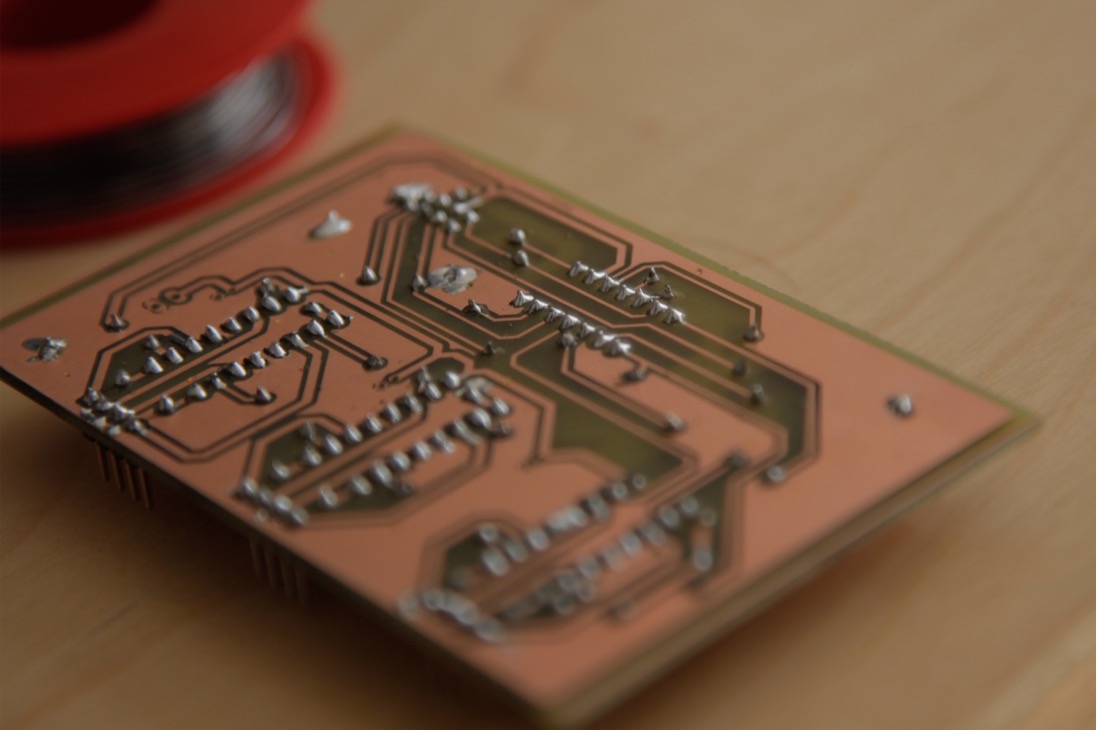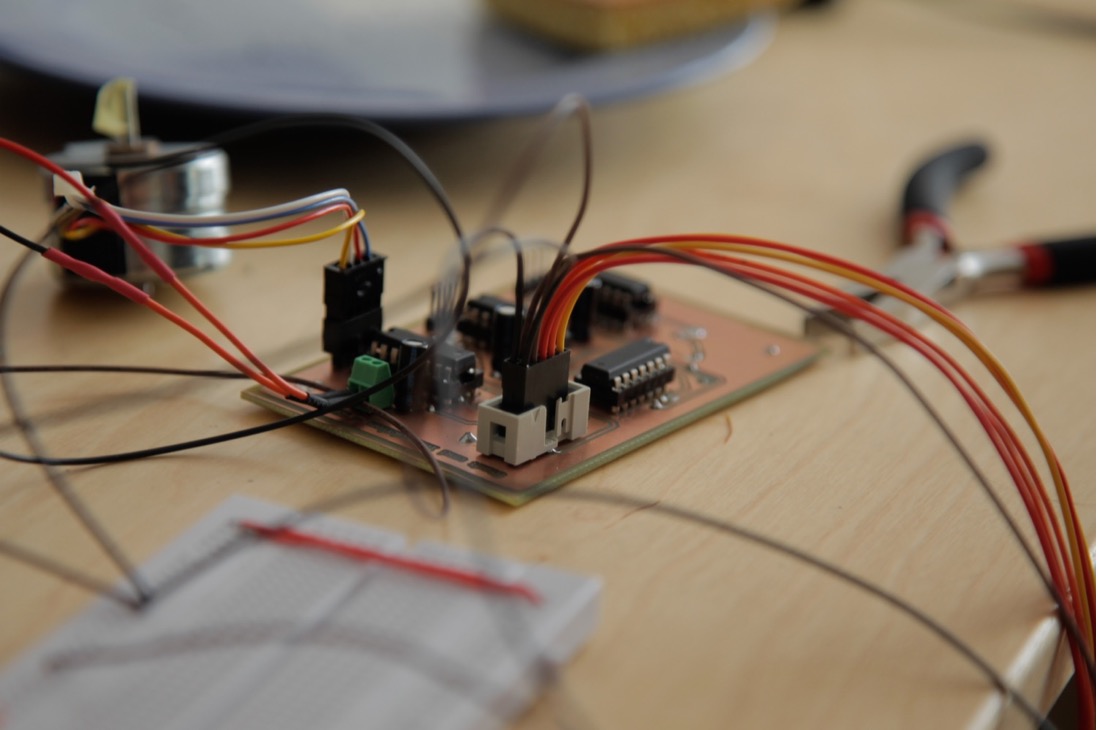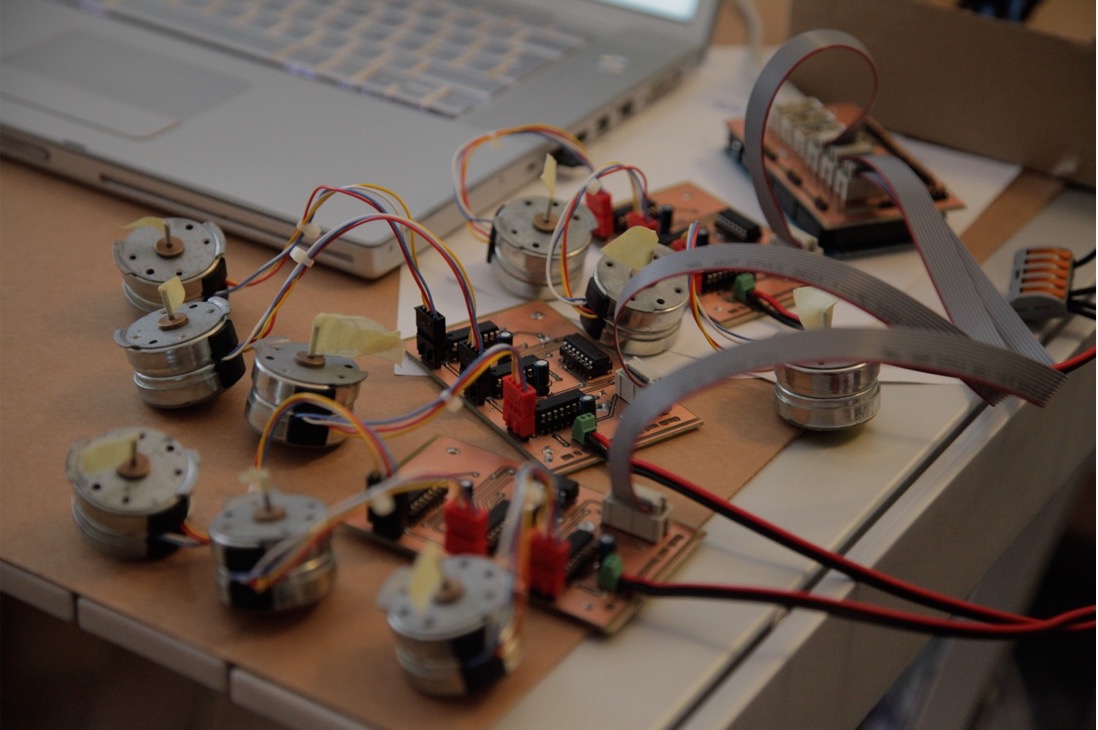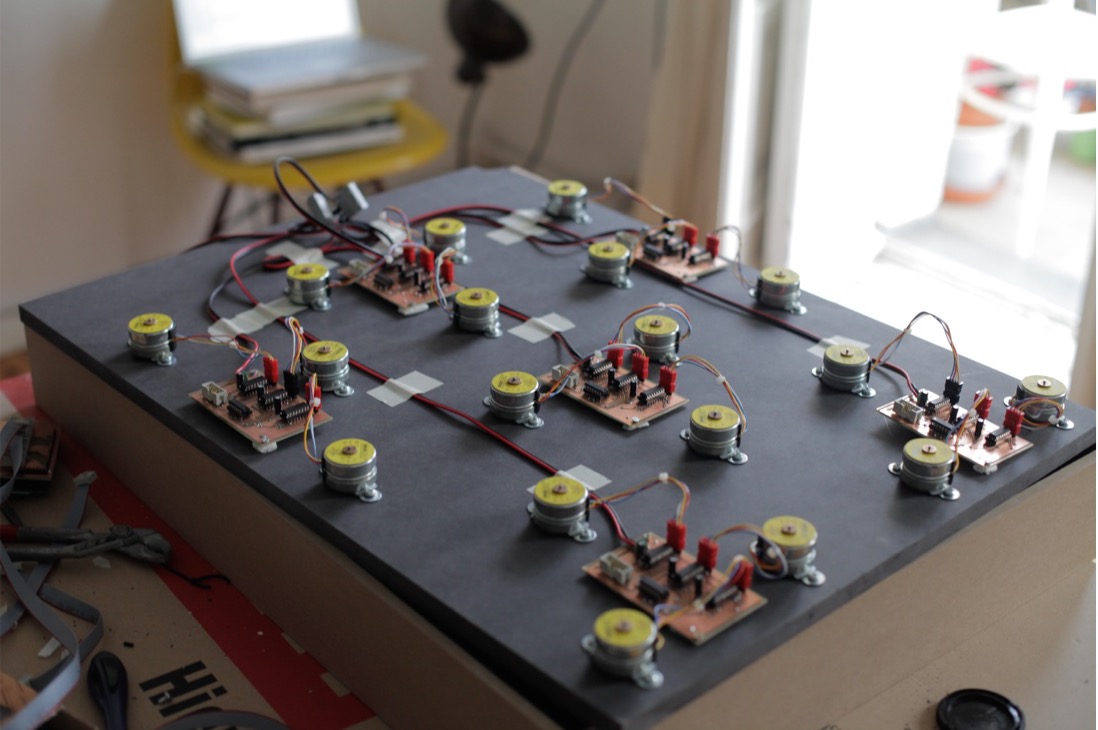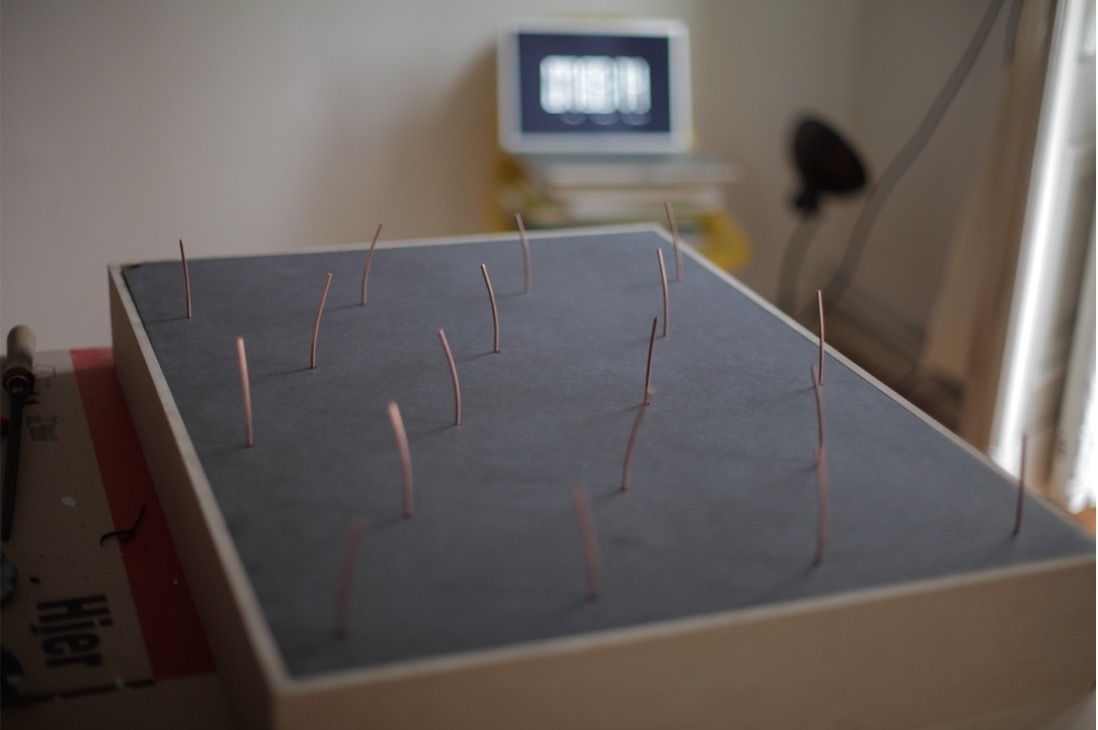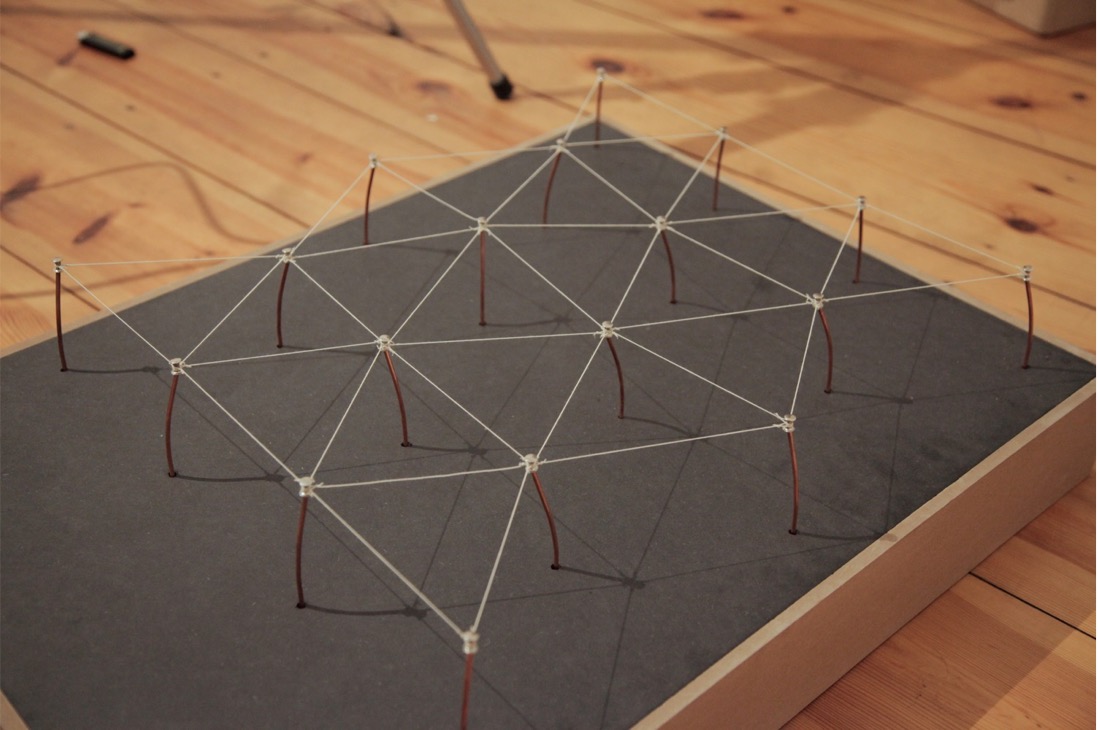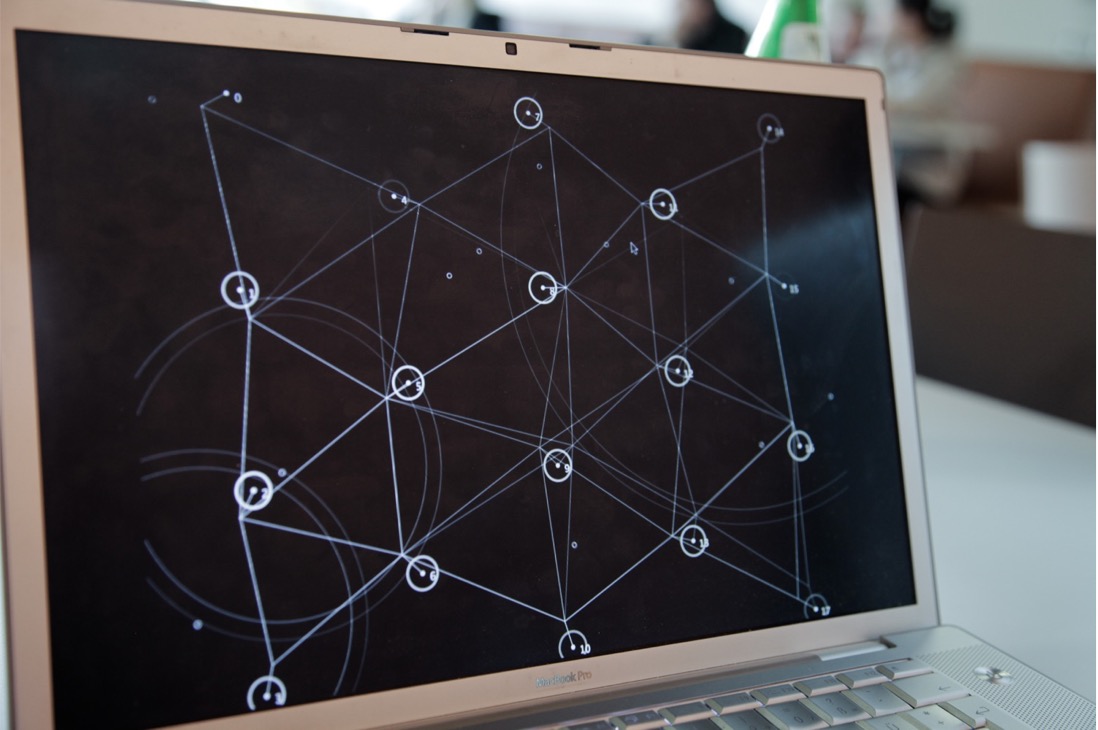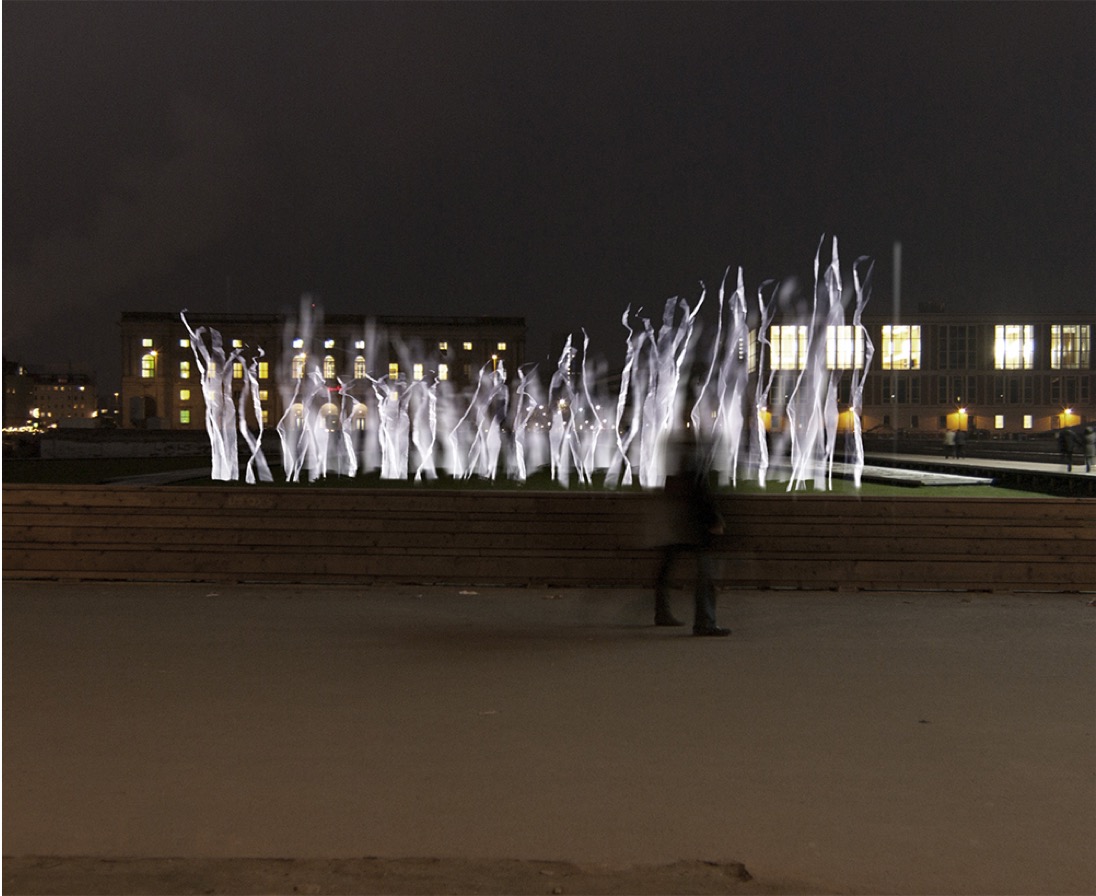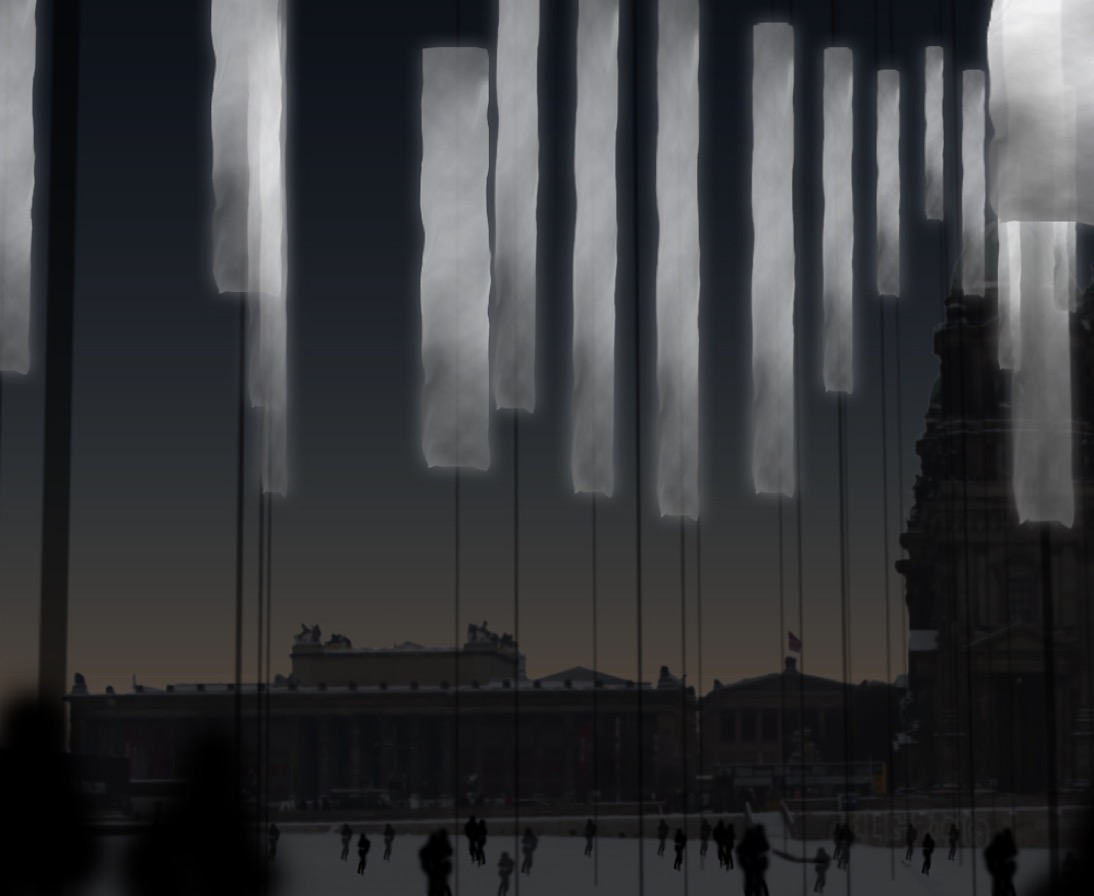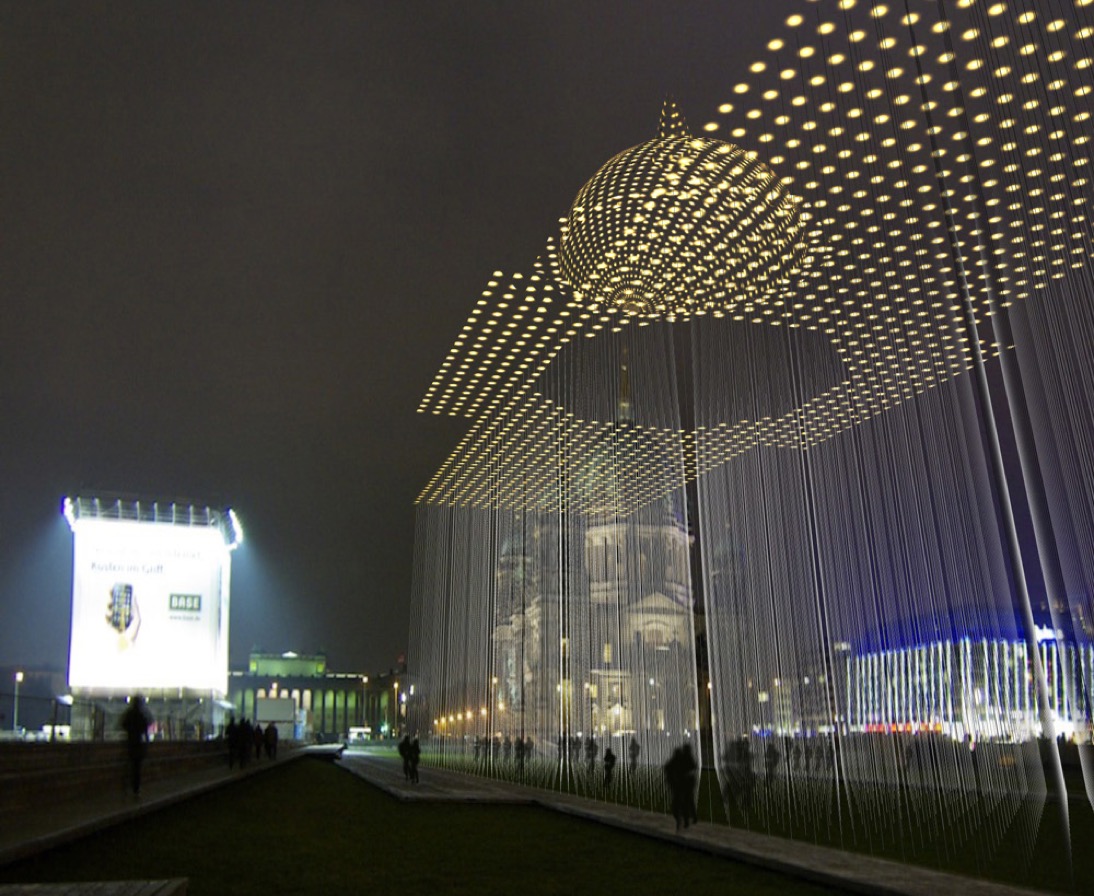More information
Concept in depth
The basic element of the installation is a spanned web of electroluminescent wire which is attached to a grid of rotatable metal poles. As the poles are bended, the head of the pole is pushed away from the centre - the result is an eccentric movement which deforms the cable web. In the case two poles are oriented toward each other, the cables sag, if the poles are oriented in opposed directions, the cable is spanned.

3D simulations
We programmed various 3D experiments in Processing in order to probe interactions between the installation and the visitors as well as explore different kinds of rasters for the illuminated network.
Building the prototypes
Cardboard prototype
In order to reduce the risks associated with the construction of a functional prototype, we chose to proof our concept with a "low res" prototype at the chosen scale (1:66). It helped us, for example to refine the choice of the final raster.
Final prototype
We designed and etches our own electronic: a shield for an Arduino Mega and 6 double-sided circuit boards - each of which to control 3 motors (we worked with Fritzing and Eagle).
Concept iterations
Urban Weave is the last step of a design process involving very different installation concepts meant to be influenced by the actions of the visitors. Beforehand, we sucessively envisioned and prototyped temporary spaces delimited by waving plastic ribbons sustained vertically using airflow or different structures sustaining vertically-moving lighting elements.
